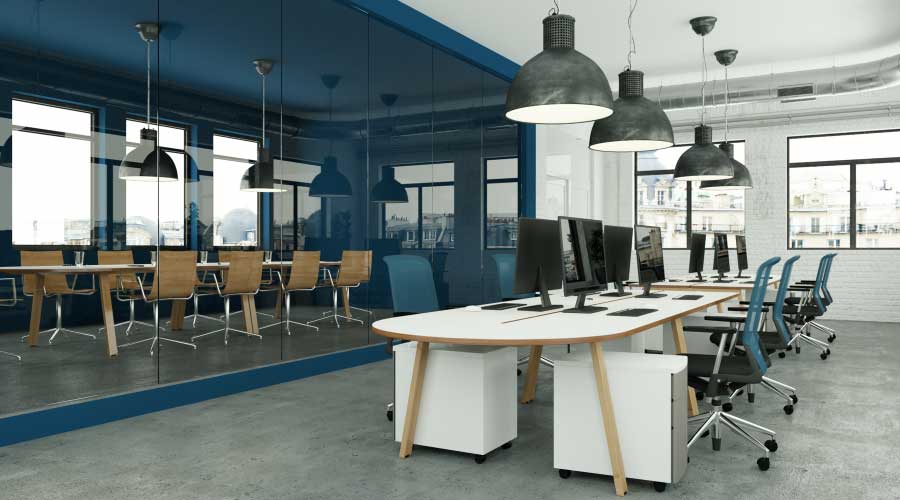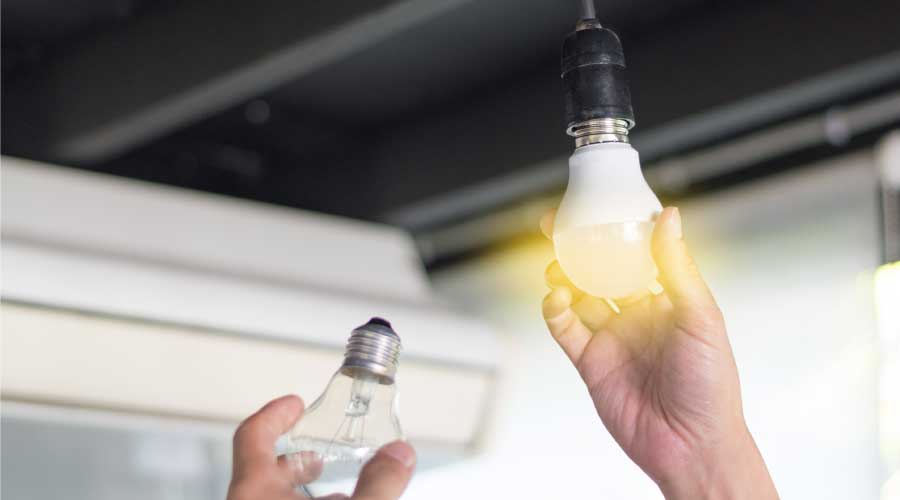LEDs Should Be Judged Based On Their Bottom-Line Economics
Most light fixtures are designed around lamps that produce light from a single point source, like and incandescent filament, or groups of glowing tubes, as in fluorescent. Such fixtures are designed to emit a mix of direct light and light reflected off their internal surfaces. To produce sufficient task illumination, LED devices may produce light from many point sources typically oriented toward a fixture’s opening, with only a minimal amount of light being reflected before leaving the fixture.
When placed inside a standard light fixture, the resulting light distribution may be quite different than expected. Horizontal surfaces directly below fixtures may be well illuminated, for example, but walls may be left dark. Where ceilings are high, this may not be an issue. One end user also found that light from the many tiny — but very bright — LEDs reflected off plastic surfaces on phones and other glossy items in the field of vision, creating distractions, especially for those wearing glasses.
Others have replaced T8 fluorescent lamps with similarly shaped LED units. Made from 1-inch clear plastic tubing, such units each contain many LEDs mounted on a flat circuit board slid inside the tube and oriented downward. Such tubes have electrical contacts that fit into existing fluorescent lampholders (often called “tombstones”), so they might appear to be direct replacements for T8 lamps. Existing fluorescent ballasts must, however, be disconnected and wiring to lampholders altered so line voltage power is sent to them. Care is needed in the installation and handling of such units. Facility managers should also check to see if the units have the UL approval typically required by property insurers.
Quality and Quantity
White light is essential for ambient lighting, but the quality of that light varies among types of LEDs. Three different methods are used to produce it:
- Mixing red, green, and blue within a single LED unit;
- Exciting a mixture of phosphors (as in fluorescent lamps) from ultraviolet light emitted by an LED;
- Exciting a yellow phosphor with blue LED light.
The CRI for the first two options may be as high as 96 but for the last may be only 68 (worse than the cool white fluorescent lamps of the 1970s). Such differences may not be crucial in parking garages, for example, but could be important in retail applications. Once again, testing in a variety of rooms is essential to avoid future complaints or problems.
Tests by DOE and others have found that some LED devices presently being sold do not produce equivalent lumens or yield comparable foot-candle illumination as the lamps they are replacing, despite product literature claiming that they do. According to James Brodrick, DOE’s lighting program manager, “relying on LED product literature can be risky, because it’s often misleading or inaccurate.”
To respond to this matter, better LED products now sport DOE’s Lighting Facts Label, which ensures that consumers and contractors are getting quality lighting products. On one standardized tag may be found all the necessary indicators: lumens, watts, CRI, corrected color temperature (and a helpful graphic), plus other data. One lighting expert, however, points out that the DOE label does not address LED product lifetime.
Letters From The Trenches
Several general conclusions on LEDs arise from the claims, critiques, and direct experiences of contractors and end users.
First, LED devices have come a long way, very fast, and hold great promise — but may still have a way to go before joining other off-the-shelf lighting systems. Too many, for example, still include parts that, upon failure, require an entire fixture to be removed and replaced.
Second, too many unjustified claims continue to be made — unaccompanied by warranties to back them up.
Third, competing lighting technologies also continue to improve. Long-life high-performance T8 lamps, for example, are boasting lifetimes, during which lumen output is known to be maintained, approaching the realistic lifetime of LEDs. Some new competitor technologies boast 5-year warrantees and may be easily maintained by most existing facilities staff.
Finally, the best results come from fixtures designed from the ground up to work with LEDs. They include street lighting, garage lighting, some downlights, decorative and display lighting, and even some track lighting. Some retrofit devices from reputable firms work well in existing fixtures, but try them first in the back office, not in the entrance lobby. All should be judged against other options by their bottom-line economics, rather than on glitter or hype. 
Lindsay Audin, CEM, LEED AP, CEP, is president of EnergyWiz, an energy consulting firm based in Croton, N.Y. He is a contributing editor for Building Operating Management.
Related Topics:













